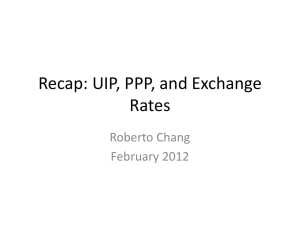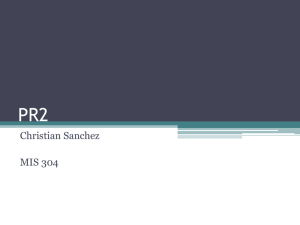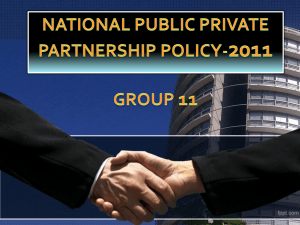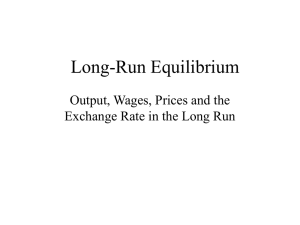Policy
advertisement
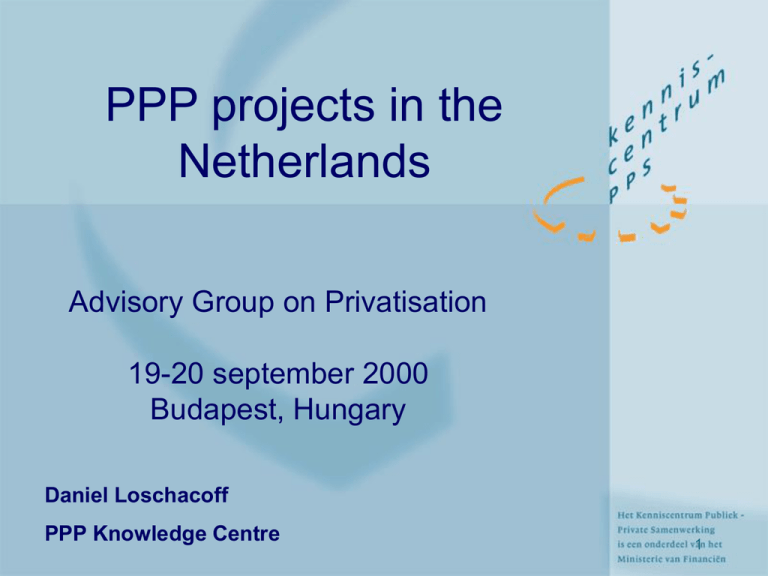
PPP projects in the Netherlands Advisory Group on Privatisation 19-20 september 2000 Budapest, Hungary Daniel Loschacoff PPP Knowledge Centre 1 Content • PPP policy of the Dutch Government – Background – Objectives of PPP • Case study: High speed rail link (HSL) • Lessons Learned • Summary 2 Why PPP in the Netherlands Policy • Increases value for money for taxpayers (PPP is not off-balance sheet financing) • Instrument to focus government on its core business • EU policy 3 Value for Money What? Policy – Higher quality (1st) – Less costs – Faster realisation How? – Output orientated approach – Scope optimalisation – Risk transfer (incentive) 4 Back to Core Business – Government: from player to referee/purchaser – Leaving room for innovation by the market This means institutional changes (more private sector supply, different role for the government) Policy • Let parties do what they are good at 5 The EU factor • Increased deregulation & third party access • Increased competition 6 Outline High Speed Rail Link • • • • • Links Amsterdam to the Belgian border Trains will run at 300 km/h Total costs Euro 5.0 billion Tendering in three parts Separate and different tendering procedures 7 HSL-Zuid Civil Works Design and construction contractors PPPs for commercial developments of railway stations Government Funding for civil works Performance fees Access fees HSL Station Areas In fras truc tu re P rovide r B uilding C a p ita l co sts C o n stru ctio n p e rio d O pe ra tion o f line M a inte n a n ce co sts R e p la ce m e n t in ve stm e n t R e p a ym e n t Fin a n cing /ta x Access fees Train Operating Companies • Operating costs • Rolling stock and maintenance • Financing/tax/dividends Repayment of loans Loans Private financiers payment during construction phase payment during operations Fares transfers Coordination/cooperation Passengers HSL (IP) contract Projects • DBFO-contract for infrastructure; train operation separated out (NS first refusal) • risk transfer: not market risk • performance fee based on availability of railway service • 30 year period • IP contract award by the end of the year • completion of infrastructure by 2005 9 Key bottlenecks • Limited experience of PPP • Public and private parties have to adapt to their new role (some reluctance) • No easy pilots (complex projects + projects with budget constraints) Result: progress is slow 10 Opportunities • Bottlenecks can - and will - be solved within the next few years • Strong political commitment to PPP • Private sector involvement is not controversial • PPP is in line with international policy development 11 Summary • Objective: value for money, not private finance • Case by case-approach: is PPP better? • Bottlenecks can be removed soon 12 And Remember: in the Polder Model… all parties want to be involved in the decision making process. 13 For more information: Internet: www.minfin.nl/pps or d.p.loschacoff@minfin.nl 14

